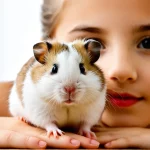Deep Roots: The Historical and Cultural Significance of Cats in the UK
Cats have been a part of UK cat history for centuries, deeply woven into both domestic life and cultural identity. Evidence suggests that cats have lived alongside humans in the UK since at least the Roman occupation, serving primarily as protectors against pests. Over time, their role evolved from practical companions to beloved household pets, reflecting changing attitudes toward animals in British society.
One cannot discuss British cat breeds without highlighting the iconic British Shorthair. Known for its robust frame and plush coat, this breed exemplifies the UK’s long-standing dedication to feline breeding. The British Shorthair’s development during the Victorian era showcased careful selection for temperament and appearance, making it a symbol of classic British elegance among cats.
In parallel : What Are the Unique Characteristics That Make Cats the Ideal Indoor Pets?
In terms of cats and British culture, felines frequently appear in folklore and traditions. Cats often symbolize mystery and independence in British stories. For instance, the “folkloric black cat” has a dual reputation; while sometimes linked to superstition, it also represents good luck in various regional tales. Furthermore, cats have featured prominently in literature, theater, and art, underscoring their enduring presence in the cultural landscape of the UK.
The blend of practical utility, selective breeding, and rich cultural symbolism firmly establishes cats as integral to UK cat history and British everyday life.
Also read : What Are Some Unusual Traits of UK Cats?
The Role of Cats in British Society Today
British society continues to embrace modern British cats as cherished companions. Across both bustling cities and quiet countryside, cats play a vital part in daily life, reflecting their enduring popularity as pets in the UK. This widespread affection highlights the strong bond between people and cats in the UK society, where feline friends offer more than just company.
In urban areas, cats provide essential emotional support, often easing feelings of loneliness amid busy lifestyles. Rural communities likewise value cats for their companionship, blending traditional animal roles with affectionate interactions. The social and emotional roles of cats within British households underline how these animals contribute not only to personal wellbeing but also to the fabric of broader communities.
British attitudes toward cats reflect this appreciation, as cats are seen as both independent creatures and loving partners to their owners. This dual perception enhances their place in UK society, bridging the gap between practicality and emotional connection. The continued popularity of cats in Britain is a testament to their unique ability to adapt and thrive alongside human life, enriching the modern British cat’s role as both pet and companion.
Celebrated Cats: British Icons in Media, Literature, and Art
British cat icons have long captured the public imagination, appearing prominently across diverse forms of media, literature, and art. Cats in British media, from television to newspapers, frequently embody charm, wit, and a quintessentially British personality, endearing them to audiences nationwide. Their cultural presence transcends simple pet status, becoming symbols woven into the fabric of British storytelling and everyday life.
Beloved fictional cats in British literature and television illustrate this phenomenon vividly. Characters such as the mischievous Puss in Boots or the sagacious Mog have entertained generations with their distinct British flair. These cats not only perform narrative functions but also embody traits like cleverness, independence, and loyalty—qualities celebrated in British culture. Their stories frequently reflect societal values or humor relevant to UK audiences, thus securing their place as famous UK cats.
In addition to fiction, real-life celebrity cats contribute to this iconic status. Cats in British media often gain recognition through their unique personal stories or prominent appearances, sometimes becoming social media sensations or featured in documentaries. These famous UK cats serve as ambassadors for feline welfare and community engagement, emphasizing the bond between British people and their pets.
The artistic representation of cats in British art further cements their iconic stature. British artists have portrayed cats for centuries, capturing their grace and mystique in paintings, sculptures, and contemporary digital forms. From historically significant works to modern interpretations, cats inspire creativity and symbolize themes such as independence and mystery, echoing their roles in literature and television.
Together, these elements illustrate why British cat icons hold such a cherished place in the country’s cultural identity, continually celebrated through media, literature, and art.
Enduring Mystique: Unique Behaviors and Folklore Surrounding UK Cats
Cats in the UK are often celebrated not just for their companionship but for their distinctive behaviors that have piqued curiosity for centuries. British cat behavior is marked by traits such as a remarkable independence fused with affection, a tendency to ‘chirp’ or chatter at birds, and a deep bond with the home environment. These behaviors have often been linked to their mystical image within British culture.
The rich tapestry of British cat folklore reveals a plethora of superstitions about cats UK residents have passed down through generations. Black cats, for example, are widely revered as symbols of good luck in many parts of Britain, especially in Scotland and Northern England. Conversely, some legends warn against letting cats cross one’s path, interpreting this as an omen of misfortune. Cats are also seen as guardians against evil spirits in many traditional stories, highlighting their perceived magical abilities.
Today, the role of cats in British folklore continues to evolve, blending ancient superstitions with contemporary cultural values. Modern British society often embraces these animals as both cherished pets and icons of enigmatic lore. Their place in UK cat behavior studies and popular culture underscores a continued fascination, bridging past beliefs with present-day admiration. This interplay of observation and myth ensures cats remain an enduring symbol in the UK’s collective imagination.

